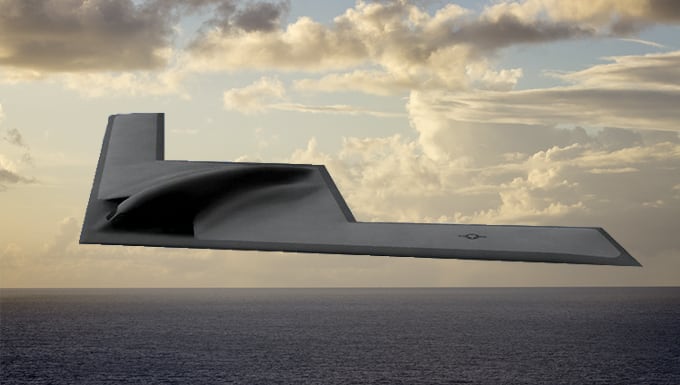WASHINGTON — The Air Force’s No. 2 officer has a countdown on his iPhone for the first B-21 Raider flight, and it may happen sooner than you think: December 2021, to be exact.
“Don’t hold me to it, but it’s something like 863 days to first flight,” said Air Force Vice Chief of Staff Gen. Stephen Wilson, according to Air Force Magazine.
RELATED

Wilson, who spoke July 24 at an AFA Mitchell Institute event, said he had recently visited B-21 prime contractor Northrop Grumman’s facilities in Melbourne, Fla., and that the company was “moving out on that pretty fast.”
The 863-day countdown — if it is accurate — would peg the Raider’s inaugural flight to Dec. 3, 2021. And while there’s still ample time for design problems and budget setbacks to delay that schedule, analysts said the Air Force’s disclosure of the first flight date means that the secretive bomber program is likely moving along smoothly.
“A lot can happen in two years. But if they feel that confident about the schedule it’s a good sign that things are on course,” said Richard Aboulafia, an aerospace analyst with the Teal Group.
The short timeline between the contract award to Northrop Grumman in 2015 — which withstood a Boeing-Lockheed protest in 2016 — and first flight in 2021 could be a sign the B-21’s air vehicle design is a smaller version of the B-2 Spirit, he said.
“Which, of course, would mean a lot less risk and reasonably fast schedule,” Aboulafia said. “There’s not a reason for the airframe itself to have to change radically. It’s everything else about it that needs to be modernized, and it seems they think they can make do with a smaller system with less range. If you accept that thinking as the likely reality, then that would make for less risk and a relatively short development schedule. That all makes sense.”
However, it is possible that there have been major design changes, in which case it’s likely that several sub-scale or even full-scale demonstrators will fly before 2021, he added.
Roman Schweizer, an analyst of Cowen Washington Research Group, said a 2021 first flight is a “significant new data point” that meshes well with the company’s projected schedule of the program.
“We believe the next major milestone for the program will be a Production Readiness Review that will clear the way for manufacturing the first prototype aircraft. Based on the program's next R&D funding step-up, we expect this could happen sometime later this calendar year to allow manufacturing to begin in FY20,” he wrote in an email to investors on Wednesday.
In March, Bloomberg reported that procurement spending for the B-21 program would start in FY22 with $202 million in funding, shooting up to $2.4 billion the following year and $3.3 billion in FY24.
“That could mean Low-Rate Production in FY23,” Schweizer wrote. “That would also make sense after flight test evaluations of the prototype (and possibly several others).”
The Air Force has kept tight hold on details related to the Raiders development, keeping much of its budget in the “black” or classified portion of the funding request. The last major B-21 related disclosure was the December 2018 announcement that the program had completed its critical design review.
Wilson’s statements follow Acting Secretary of the Air Force Matt Donovan’s visit to Northrop’s B-21 Design and Development Headquarters in Melbourne., on July 19. Donovan was accompanied by Randy Walden, director of the Air Force Rapid Capabilities Office, which is responsible for executing the program.
“We look forward to receiving the B-21 on time and incorporating it into our future force,” Donovan said after the visit. “The B-21 will be a significant component of our Air Force as we continue to modernize to meet the National Defense Strategy and is a game-changing capability to win the high-end fight.”
Valerie Insinna is Defense News' air warfare reporter. She previously worked the Navy/congressional beats for Defense Daily, which followed almost three years as a staff writer for National Defense Magazine. Prior to that, she worked as an editorial assistant for the Tokyo Shimbun’s Washington bureau.








